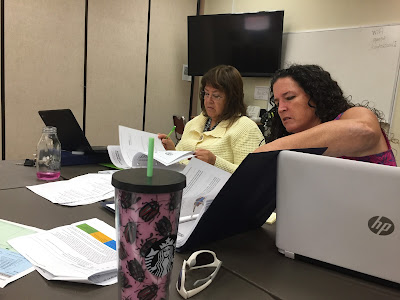Biology teachers from Camarillo and Channel Islands High Schools got together along with district coaches and admin to begin the work of curating a Biology curriculum to replace the current textbook. These two schools have been chosen because they are moving to a three course model where freshman will now take Biology. For the one year, they will have both 9th and 10th graders taking the course. Instead of purchasing a bunch of textbooks for the one year, they will experiment with using
Open Educational Resources (OER) materials that they have curated.
#
GoOpen (an OER campaign) is a nation-wide movement that has been endorsed by 20 states. Schools are moving towards free and openly licensed digital resources to take the place of expensive textbooks. Districts assemble teams of teachers and other stakeholders to look over and gather resources from various open source websites. The materials are put into some digital form for students and teachers to access. They can also be printed out if necessary.
OER also allows for districts to customize the materials that they use so that they better fit what teachers want to be taught. It also can be updated at any time, ensuring that you have the most current information in your text. As is often asked, "Who is the current president in your Social Studies textbook?" or "Is Pluto still a planet in your Science text?".
The OER materials will be printed out into a reader that can be taken home by the students. Teachers will also be recieving a cart of Chromebooks so that students can access the materials digitally while in class. All of the materials will be housed in Google Drive and distributed to students using Google Classroom
.











